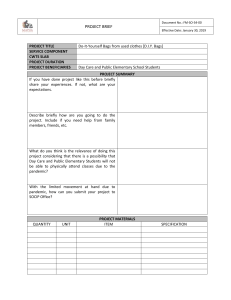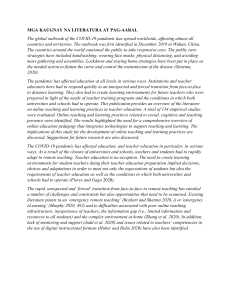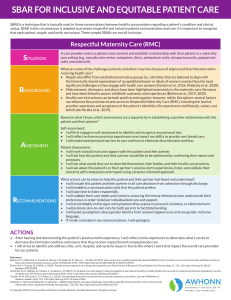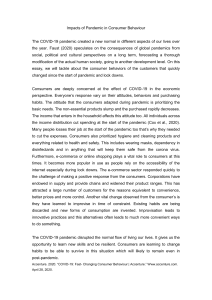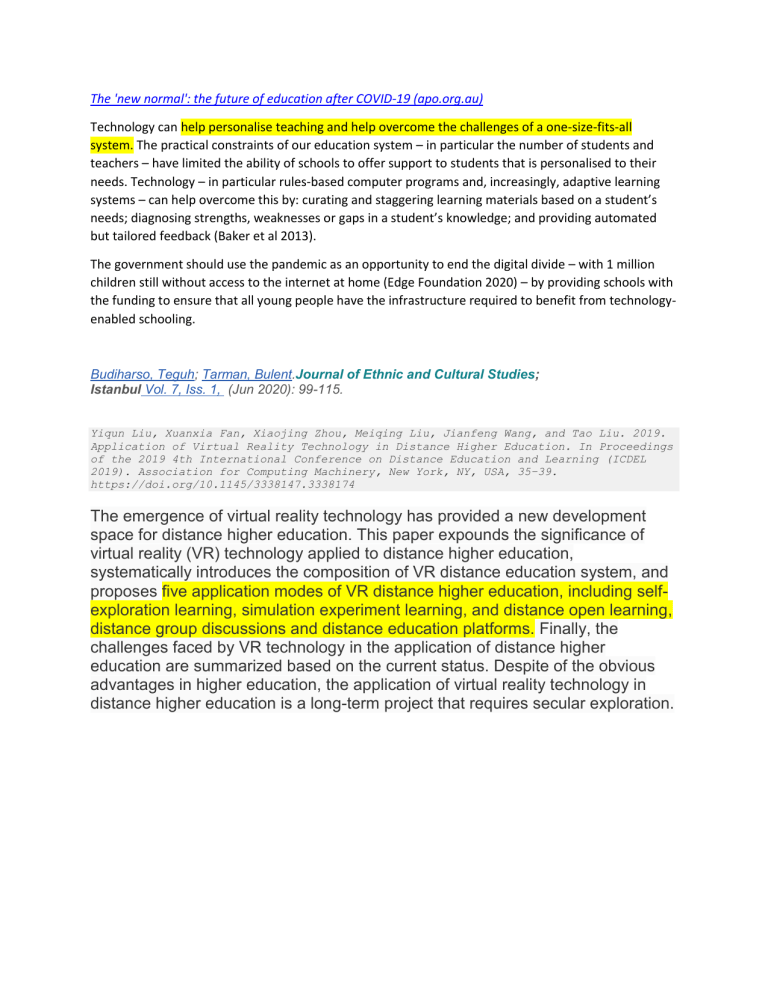
The 'new normal': the future of education after COVID-19 (apo.org.au) Technology can help personalise teaching and help overcome the challenges of a one-size-fits-all system. The practical constraints of our education system – in particular the number of students and teachers – have limited the ability of schools to offer support to students that is personalised to their needs. Technology – in particular rules-based computer programs and, increasingly, adaptive learning systems – can help overcome this by: curating and staggering learning materials based on a student’s needs; diagnosing strengths, weaknesses or gaps in a student’s knowledge; and providing automated but tailored feedback (Baker et al 2013). The government should use the pandemic as an opportunity to end the digital divide – with 1 million children still without access to the internet at home (Edge Foundation 2020) – by providing schools with the funding to ensure that all young people have the infrastructure required to benefit from technologyenabled schooling. Budiharso, Teguh; Tarman, Bulent.Journal of Ethnic and Cultural Studies; Istanbul Vol. 7, Iss. 1, (Jun 2020): 99-115. Yiqun Liu, Xuanxia Fan, Xiaojing Zhou, Meiqing Liu, Jianfeng Wang, and Tao Liu. 2019. Application of Virtual Reality Technology in Distance Higher Education. In Proceedings of the 2019 4th International Conference on Distance Education and Learning (ICDEL 2019). Association for Computing Machinery, New York, NY, USA, 35–39. https://doi.org/10.1145/3338147.3338174 The emergence of virtual reality technology has provided a new development space for distance higher education. This paper expounds the significance of virtual reality (VR) technology applied to distance higher education, systematically introduces the composition of VR distance education system, and proposes five application modes of VR distance higher education, including selfexploration learning, simulation experiment learning, and distance open learning, distance group discussions and distance education platforms. Finally, the challenges faced by VR technology in the application of distance higher education are summarized based on the current status. Despite of the obvious advantages in higher education, the application of virtual reality technology in distance higher education is a long-term project that requires secular exploration. Ahir, K., Govani, K., Gajera, R. et al. Application on Virtual Reality for Enhanced Education Learning, Military Training and Sports. Augment Hum Res 5, 7 (2020). https://doi.org/10.1007/s41133-019-0025-2 Abstract Virtual reality is emerging freshly in the field of interdisciplinary research. In the past years, its area has grown over research and the industry has made important investments in the manufacturing of different VR products as well as in research. Virtual reality (VR) is developed by the union of technologies that are used to visualize and interact with virtual atmosphere. This atmosphere portrays a 3D space which may be imaginary, microscopic or macroscopic and based on practical laws of dynamics or imaginary dynamics. VR technology is getting supreme using computer hardware, software and virtual environment technology through which the real world can be simulated dynamically. The dynamical conditions can react according to the human language, form and so on rapidly that humans can communicate with virtual environment in true time. Therefore, VR technology can be put into application in education, military, sports training, and is portraying an important part in the evolution. The paper summarizes the developments in VR technology in the fields of education, military and sports, and then analyses the future trends of VR in these fields. "The Impact of COVID-19 Pandemic on Education System in Developing Countries: A Review" written by Seble Tadesse, Worku Muluye, published by Open Journal of Social Sciences, Vol.8 No.10, 2020 After COVID-19, the schools and universities design strategies and methods to recover lost portions, ensure children return to school when schools reopen, and scale online learning infrastructures. Finally, the COVID-19 pandemic has been impacting the faceto-face education system of developing countries. Therefore, developing countries should scale online teaching and learning infrastructures. E.G. de Leon & J. Pittock (2017) Integrating climate change adaptation and climate-related disaster risk-reduction policy in developing countries: A case study in the Philippines, Climate and Development, 9:5, 471-478, DOI: 10.1080/17565529.2016.1174659







